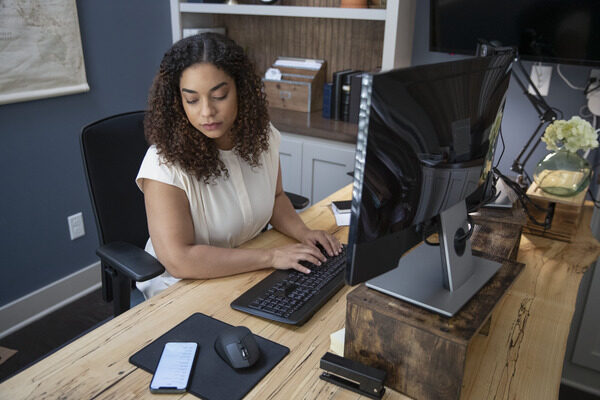
Your first work email isn’t something you need to be afraid of. Follow these etiquette tips and pay attention to the emails you receive to figure out how to create effective, polite and personable work emails. It’s a skill that will serve you well throughout your career.
Subject line
Your subject line should be a mini summary of your email. Keep it descriptive but easy to understand. Another key point: don’t mark something urgent unless it actually is, and avoid using urgent language in subject lines unless absolutely necessary.
Greeting
A good work email greeting is three things: professional, concise and personal.
Opening remarks
It would be unsettling if a coworker showed up at your desk and started discussing a project before even greeting you, or if your boss walked by and asked for you to complete a task without looking you in the eye. Along that same vein, it’s not the best idea to jump right into a lengthy paragraph or immediately voice your request. Use a short pleasantry to connect with your recipient. Good examples are simple phrases like “I hope you had a good weekend!”.
Main purpose
Address just one purpose whenever possible, and keep your message simple. Provide whatever relevant and useful details you can. This is also a good place to explain any email attachments and what the recipient is supposed to do with them.
If you have a specific deadline by which you’d like the recipient to complete your call to action (described below), mention it here. This is also the place to provide them with any additional information they may need to complete the task you’ve requested.
Call to action
Also referred to as a CTA, this is the real purpose of your email. It’s where you politely tell the recipient what you expect their response to the email to be. It’s also a good time to gently remind them of your deadline again.
Proofread before you send
Last, but certainly not least, you need to proofread your email. Nothing deflates an argument or devalues a request like poor grammar or spelling errors. If you want your recipients to take time reading and responding to your email, be sure to give the same courtesy when composing it.
Finishing touches to make your email professional
Tone is important. Most likely, you wouldn’t speak to a VP the same way you would to a peer. Even small courtesies, like polite pronouns such as “sir” and “ma’am” can make a difference. On the other hand, there’s no need to be unnecessarily formal if that’s not how your company runs.
The rule of thumb is to identify tone by matching it to your audience.
Capitalization is a key part of grammar, and it needs to be used correctly. Don’t capitalize words unnecessarily, and don’t write in all caps—it’s usually interpreted as yelling.
Exclamation points are usually fine in greetings and closing remarks (like “Good morning!” or “Thanks!”), but aren’t necessary throughout the entire body of the email.
And finally, “please” and “thank you” can go a long way.
Did you like this post? Check out more of our new On Your Own series, like our post on how to decorate your first cubicle.



